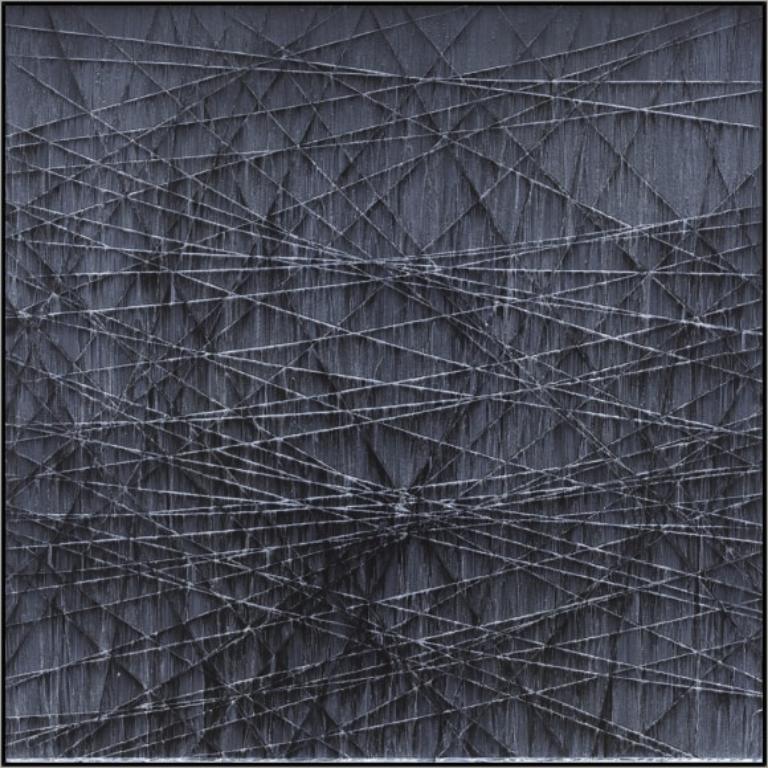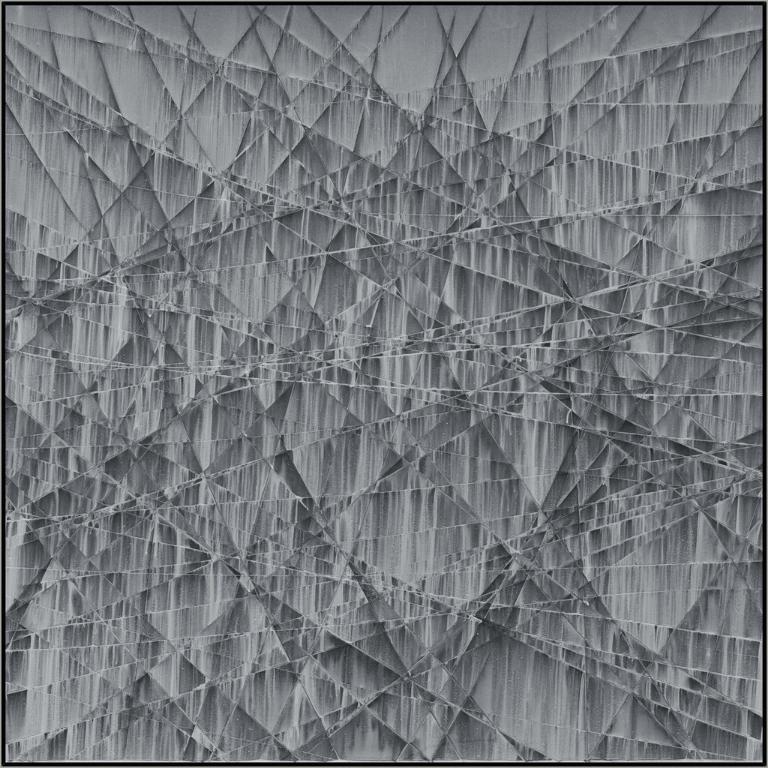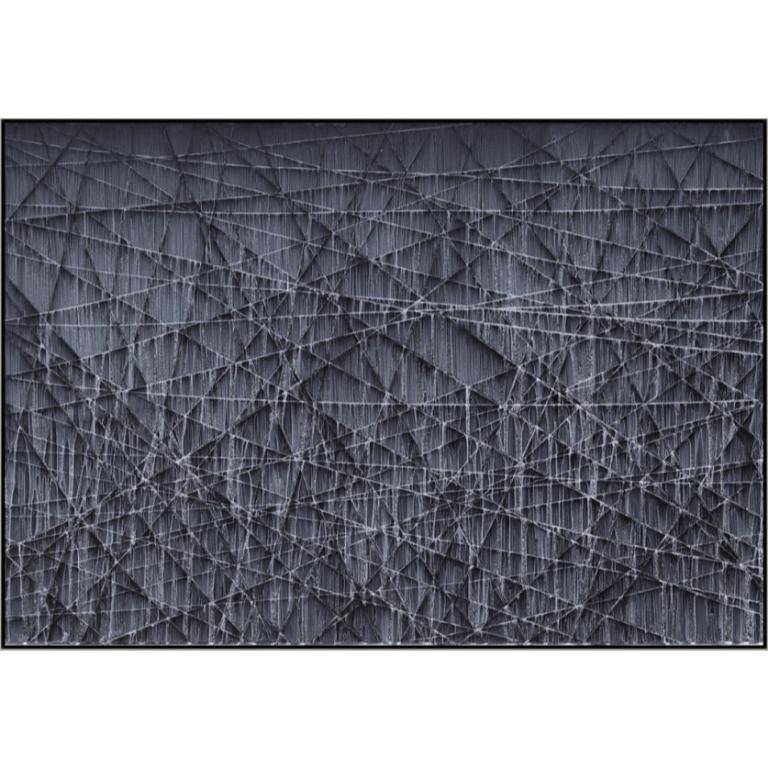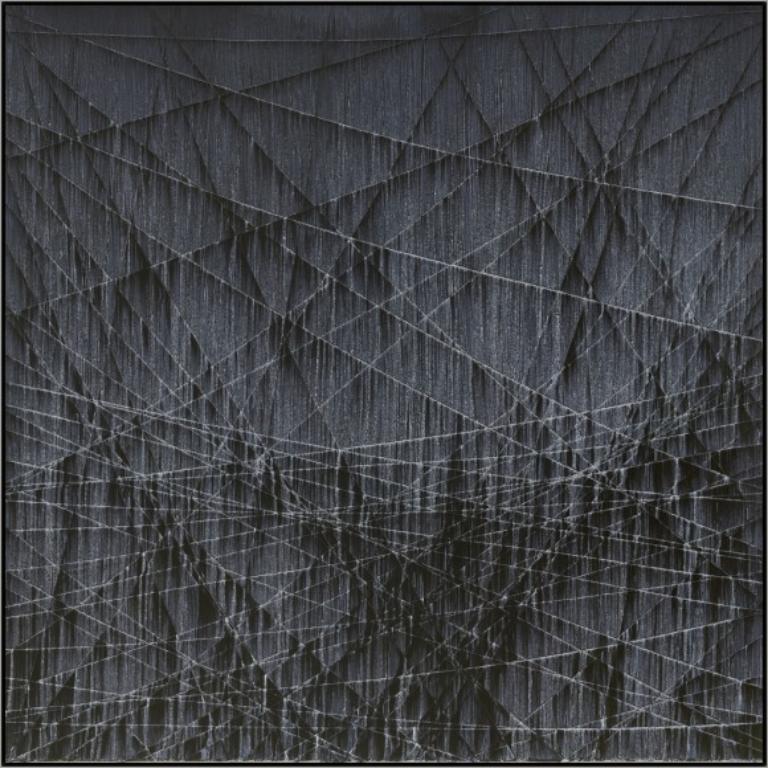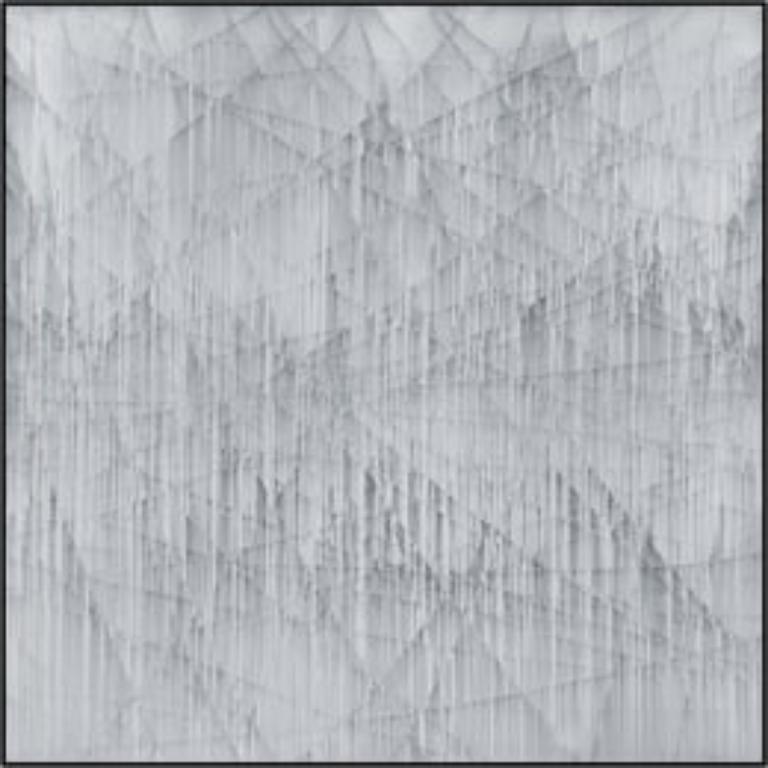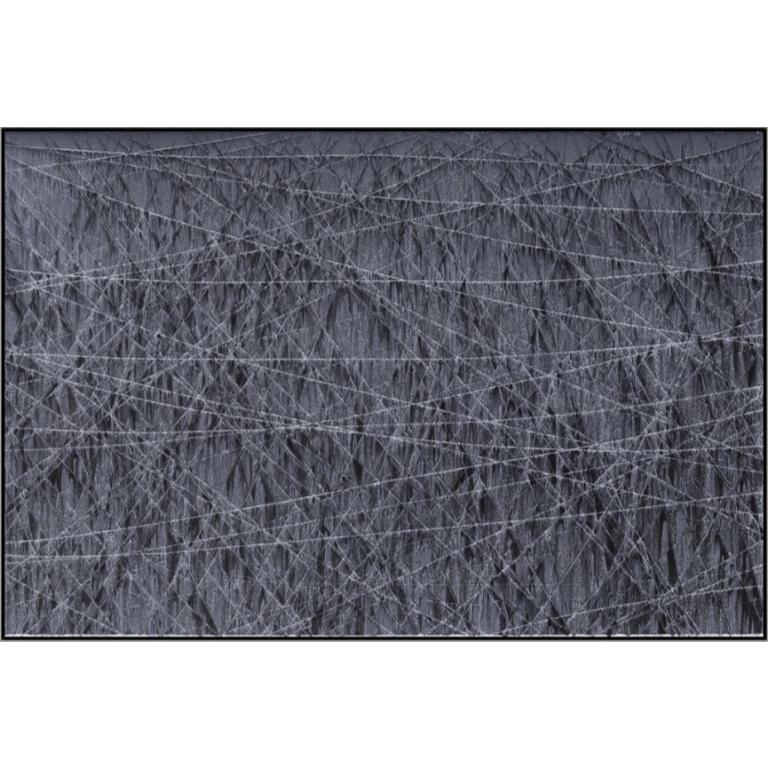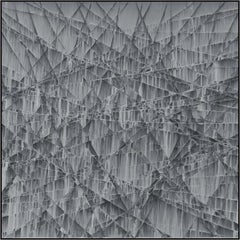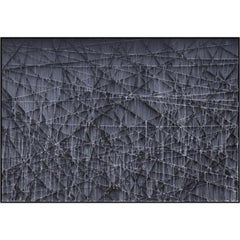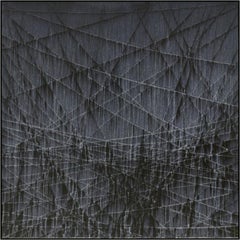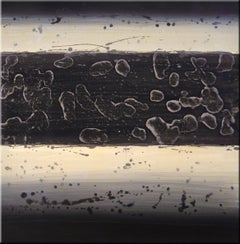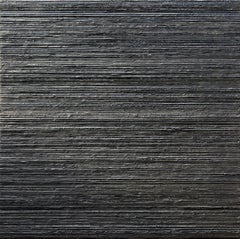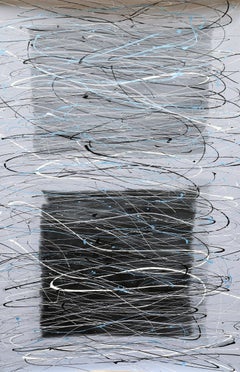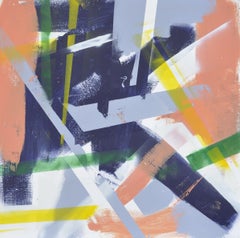Items Similar to Becoming #8, Series: The Cut Line Abstractions, Acrylic on Panel Painting, 2013
Want more images or videos?
Request additional images or videos from the seller
1 of 5
Michael BattyBecoming #8, Series: The Cut Line Abstractions, Acrylic on Panel Painting, 20132013
2013
Price Upon Request
Price Upon Request
Price Upon Request
Price Upon Request
Price Upon Request
Price Upon Request
Price Upon Request
Price Upon Request
Price Upon Request
Price Upon Request
About the Item
Becoming #8, Series: The Cut Line Abstractions, Acrylic on Panel Painting, 2013
Additional information:
Medium: Acrylic on Panel
Dimensions: 36 x 36 in
Michael Batty (Canadian, born 1967)
Michael Batty is a painter and a printmaker that operates with a formal language arising from a microcosm of the particle world. The minimalist pieces speak with geometry and line, and explores the balance between order and chaos by introducing random elements to the tightly rendered surfaces. The artist builds up a webbed network of intersecting lines by cutting into the surface of the painting with a knife; creating thin ridges and minute grooves. The incised lines catch and divert the paint, creating a random ground of pigment with a shifting depth of color to create quantum imagery.
Batty graduated from Emily Carr College of Art and Design in Vancouver in 1989 with a major in painting. He attended the renowned artist workshops in Emma Lake, Saskatchewan, and studied printmaking at The Art Institute at Capilano College in Vancouver. Batty’s paintings can be found in collections around the world, including the Waldorf Astoria in Beijing, China, W Guangzhou, China, Four Seasons, Dubai, UAE, and Bank of Montreal in Calgary and Toronto.
- Creator:Michael Batty (Canadian)
- Creation Year:2013
- Dimensions:Height: 36 in (91.44 cm)Width: 36 in (91.44 cm)Depth: 1 in (2.54 cm)
- Medium:
- Movement & Style:
- Period:
- Condition:
- Gallery Location:Orange, CA
- Reference Number:1stDibs: LU2793215551242
About the Seller
No Reviews Yet
Recognized Seller
These prestigious sellers are industry leaders and represent the highest echelon for item quality and design.
Established in 1984
1stDibs seller since 2024
- ShippingRetrieving quote...Shipping from: Orange, CA
- Return Policy
Authenticity Guarantee
In the unlikely event there’s an issue with an item’s authenticity, contact us within 1 year for a full refund. DetailsMoney-Back Guarantee
If your item is not as described, is damaged in transit, or does not arrive, contact us within 7 days for a full refund. Details24-Hour Cancellation
You have a 24-hour grace period in which to reconsider your purchase, with no questions asked.Vetted Professional Sellers
Our world-class sellers must adhere to strict standards for service and quality, maintaining the integrity of our listings.Price-Match Guarantee
If you find that a seller listed the same item for a lower price elsewhere, we’ll match it.Trusted Global Delivery
Our best-in-class carrier network provides specialized shipping options worldwide, including custom delivery.More From This Seller
View AllBecoming #9, Series: The Cut Line Abstractions, Acrylic on Panel Painting, 2020
By Michael Batty
Located in Orange, CA
Becoming #9, Series: The Cut Line Abstractions, Acrylic on Panel Painting, 2020
Additional information:
Medium: Acrylic on Panel
Dimensions: 36 x 36 in
Michael Batty (Canadian, bor...
Category
21st Century and Contemporary Abstract Impressionist Abstract Paintings
Materials
Acrylic, Panel
Traces #2 Series: The Cut Line Abstractions, Acrylic on Panel Painting, 2020
By Michael Batty
Located in Orange, CA
Traces #2 Series: The Cut Line Abstractions, Acrylic on Panel Painting, 2020
Additional information:
Medium: Acrylic on Panel
Dimensions: 48 x 72 in
Michael Batty is a painter and ...
Category
21st Century and Contemporary Abstract Paintings
Materials
Acrylic, Panel
Chart #3, Series: The Cut Line Abstractions, Acrylic on Panel Painting, 2020
By Michael Batty
Located in Orange, CA
Chart #3, Series: The Cut Line Abstractions, Acrylic on Panel Painting, 2020
Additional information:
Medium: Acrylic on Panel
Dimensions: 40 x 58 in
Michael Batty (Canadian, born 1...
Category
21st Century and Contemporary Abstract Paintings
Materials
Acrylic, Panel
Traces #3, Series: The Cut Line Abstractions, Acrylic on Panel Painting, 2020
By Michael Batty
Located in Orange, CA
Traces #3, Series: The Cut Line Abstractions, Acrylic on Panel Painting, 2020
Additional information:
Medium: Acrylic on Panel
Dimensions: 48 x 48 in
Michael Batty (Canadian, born ...
Category
21st Century and Contemporary Abstract Paintings
Materials
Acrylic, Panel
Curtain #2, Series: The Cut Line Abstractions, Acrylic on Panel Painting, 2013
By Michael Batty
Located in Orange, CA
Curtain #2, Series: The Cut Line Abstractions, Acrylic on Panel Painting, 2013
Additional information:
Medium: Acrylic on Panel
Dimensions: 93 x 93 in
Michael Batty (Canadian, born...
Category
21st Century and Contemporary Abstract Paintings
Materials
Acrylic, Panel
Prospect #9, Series: The Cut Line Abstractions, Acrylic on Panel Painting, 2020
By Michael Batty
Located in Orange, CA
Prospect #9, Series: The Cut Line Abstractions, Acrylic on Panel Painting, 2020
Additional information:
Medium: Acrylic on Panel
Dimensions: 48x 72 in
Michael Batty (Canadian, born...
Category
21st Century and Contemporary Abstract Paintings
Materials
Acrylic, Panel
You May Also Like
Spirit #119, Painting, Acrylic on Canvas
By Tracy Burke
Located in Yardley, PA
This piece was created on museum quality gallery wrapped canvas stretched over a hand-crafted wooden stretcher frame. Edges are staple-free and painted to compliment the artwork. No ...
Category
2010s Contemporary Paintings
Materials
Acrylic
abstract 40/40 - Encaustic Minimalist Painting, 2022
By Michele Renée Ledoux
Located in Boston, MA
abstract 40/40
40.0 x 40.0 x 3.0, 23.0 lbs
Encaustic Paint
Hand signed by artist
Description:
An orginial, contemporary minimalist painting by Michele Renée Ledoux. Ledoux uses en...
Category
21st Century and Contemporary Minimalist Abstract Paintings
Materials
Encaustic
Large Abstract Expressionist Painting by William Hewes
By William Hewes
Located in Long Island City, NY
A large, dramatic abstract oil painting by Contemporary artist Bill Hewes. William (Bill) Hewes is an American self-taught artist. Hewes was born in Easthampton, Massachusetts in 1957. Before becoming an artist in 2012 Hewes worked in the building trades for 40 years and often uses the skills learned from his tradesman work within his artwork. Hewes paints in the Action/Drip style, even building his own spinning table...
Category
2010s Abstract Expressionist Abstract Paintings
Materials
Enamel
Breaking-within-Abstract No. 2, Painting, Acrylic on Wood Panel
By Kevin Brewerton
Located in Yardley, PA
Broad brush strokes and color composition confronts the viewer with a dynamic work of art. :: Painting :: Abstract :: This piece comes with an official certificate of authenticity si...
Category
2010s Abstract Abstract Paintings
Materials
Acrylic
Entre Nous - original abstract painting on linen
Located in London, GB
Entre Nous 2023
by Christian Möller
original abstract painting
acrylic and oil on linen
ships securely from London England.
Christian Möller was born in...
Category
2010s Abstract Expressionist Abstract Paintings
Materials
Acrylic
Untitled (ER39) Abstract Expressionist painting
Located in Wilton Manors, FL
Edward Pechmann Renouf (1906-1999). Oil on panel measures 16 x 24 inches. Signed lower margin. Excellent condition.
Provenance: Allan Stone Pr...
Category
1970s Abstract Expressionist Abstract Paintings
Materials
Masonite, Oil
$1,200 Sale Price
20% Off
